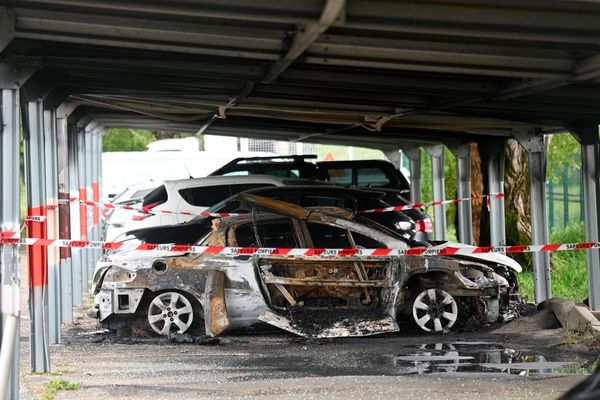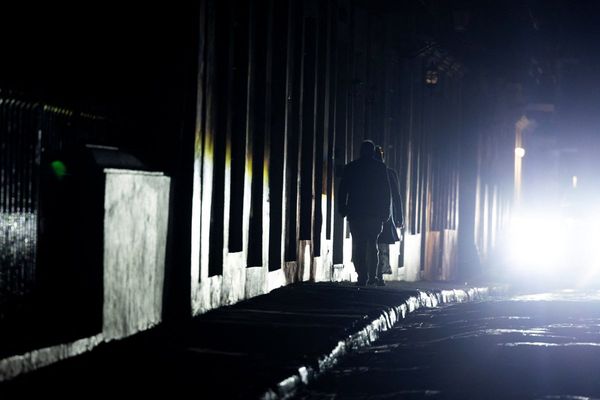Topline
A U.S. airstrike in Afghanistan that misidentified a terrorist threat and killed 10 civilians was an “honest mistake,” but it didn’t involve legal violations or criminal negligence, a Department of Defense investigation has concluded, which also revealed Wednesday that a military video feed showed a child near the target before the botched operation.

Key Facts
An independent probe found that the seven children and three adults killed in the late August strike in Kabul, and the car targeted, did not pose a threat to U.S. forces, Lt. Gen. Sami Said, the Air Force’s inspector general, who led the investigation, said in a Wednesday press briefing, confirming the Pentagon’s findings from almost two months ago.
The military had a video feed showing a child was near the site of the airstrike two minutes before officials launched a Hellfire missile, Said acknowledged, but he said the child’s presence was “100% not obvious” and his investigators might have noticed this child after the fact because they were actively looking for one.
The military interpreted its intelligence on the car incorrectly, a mistake Said blamed on “execution errors combined with confirmation bias and communication breakdowns.”
However, Said concluded the strike didn’t violate any laws or involve criminally negligent acts, and argued no single person was responsible for the mistakes.
He said the personnel involved in it genuinely thought they were targeting “an imminent threat to U.S. forces” at Kabul’s international airport, which was the site of an Islamic State terrorist attack that killed civilians and 13 U.S. service members just days earlier, and they took steps to mitigate the risk of civilian casualties.
He also stressed the airstrike was conducted during a challenging period: The military’s final troops were set to leave Afghanistan less than two days later, and it was concerned about looming threats to remaining American forces in Kabul.
Crucial Quote
“They all had a genuine belief .. that that was a threat to U.S. forces,” Said told reporters. “It’s a regrettable mistake. It’s an honest mistake. I understand the consequences, but it’s not criminal conduct.”
Tangent
Said also made three recommendations for future airstrikes carried out under time constraints. He said the military should share information to a broader group of personnel, and review its practices for scanning for civilians. He also said the military should develop ways to prevent personnel from unintentionally drawing conclusions about a possible threat which fall in line with their preconceived notions — a concept he called “confirmation bias.”
What We Don’t Know
The exact contents of the investigation. Said said his report on the strike will remain classified, largely because it contains details about the military’s airstrike tactics.
Key Background
The Kabul airstrike was one of the final acts of the United States’ 20-year war in Afghanistan, which ended in August with the Taliban back in control of the country. Less than a week before troops left, the Islamic State’s local affiliate (known as IS-Khorasan) carried out a deadly suicide bombing at the gates of the Kabul airport, disrupting the United States’ frenzied effort to evacuate citizens and prompting President Joe Biden to vow to “make you pay.” A drone struck a white Toyota Corolla in Kabul just days later, an action the Pentagon claimed took out an “imminent” threat and didn’t appear to involve any civilian casualties. However, the New York Times and Washington Post later discovered the Corolla’s driver worked for a U.S. nonprofit and was transporting coworkers and water jugs rather than explosives, and the strike wasn’t necessarily followed by a large “secondary explosion” caused by bombs — which military officials initially cited as evidence they’d picked the right target. By mid-September, the Pentagon admitted the strike was a “tragic mistake” killing 10 civilians.
What To Watch For
The strike could prompt new questions about whether the military can effectively carry out future counterterrorism missions in Afghanistan without an on-the-ground presence. It also links to longstanding concerns about civilian casualties during targeted U.S. drone strikes. But Said argued the Kabul airstrike was “very unique” and tough to compare with other airstrikes: It was a self-defense mission conducted during a high-risk period, and it was subject to unusual time constraints because the military thought a threat was imminent, he said.
Further Reading
Watchdog finds no misconduct in mistaken Afghan airstrike (Associated Press)
Drone Airstrike Killed 10 Afghan Civilians And No Terrorist Targets, Pentagon Now Says (Forbes)







